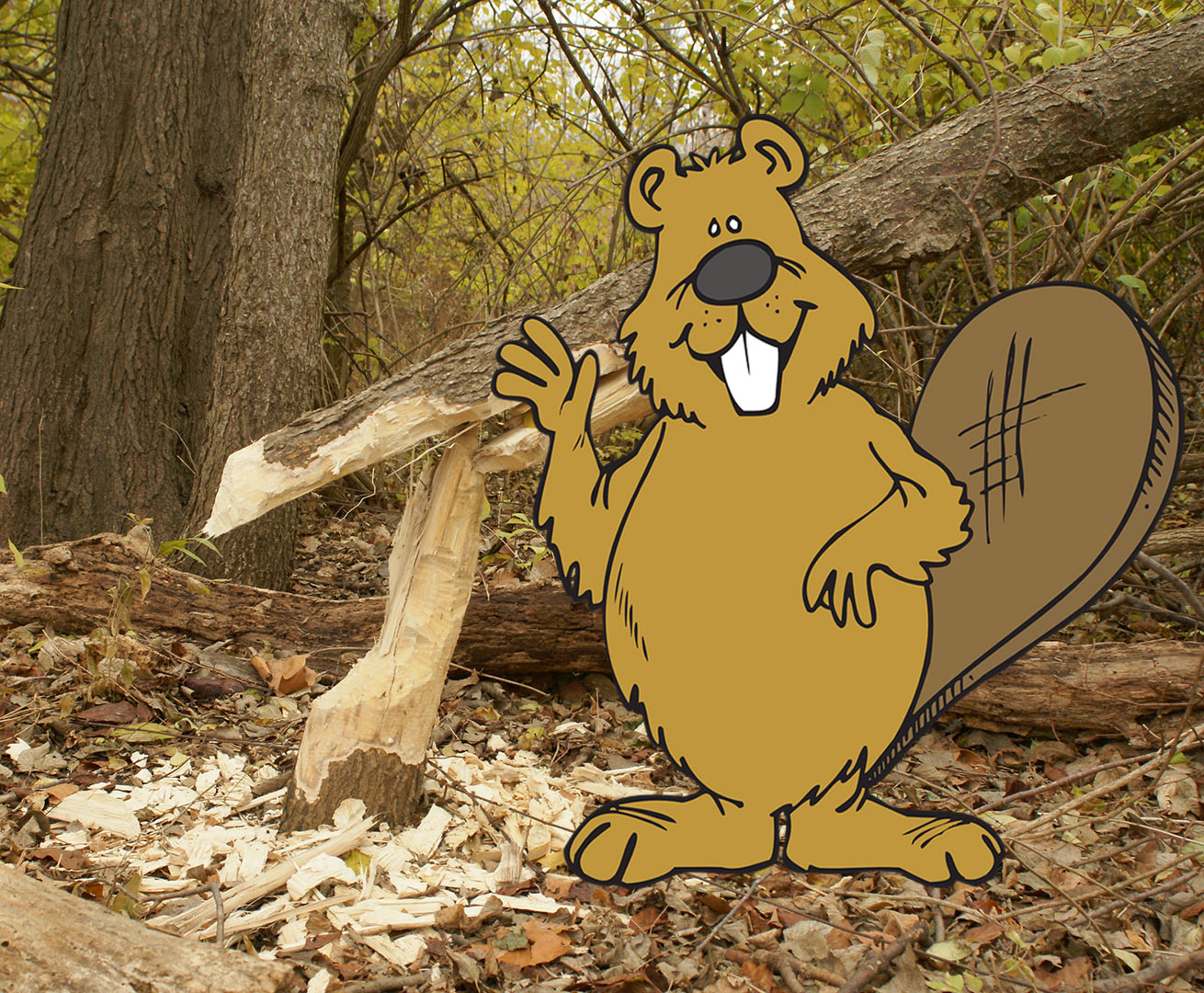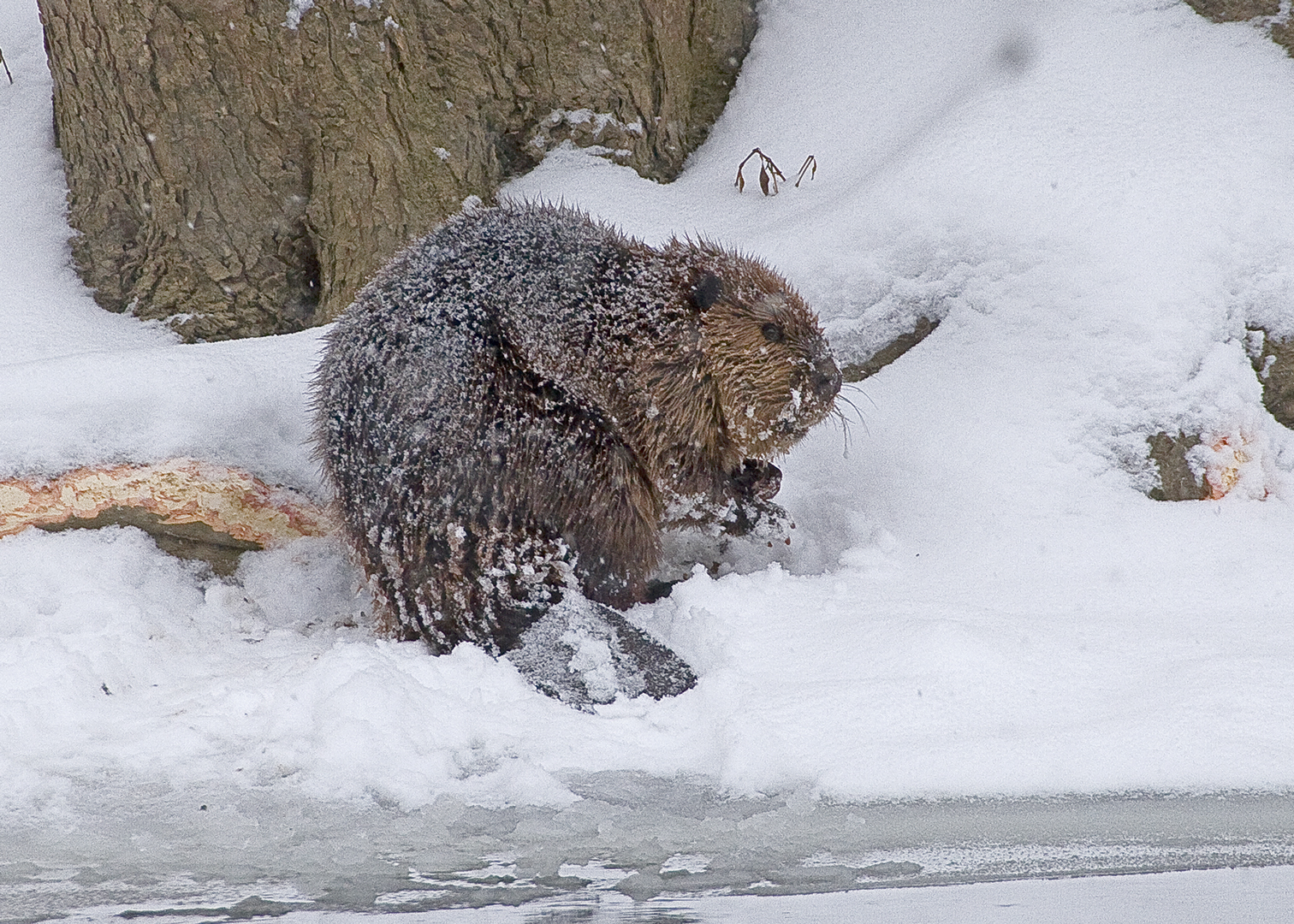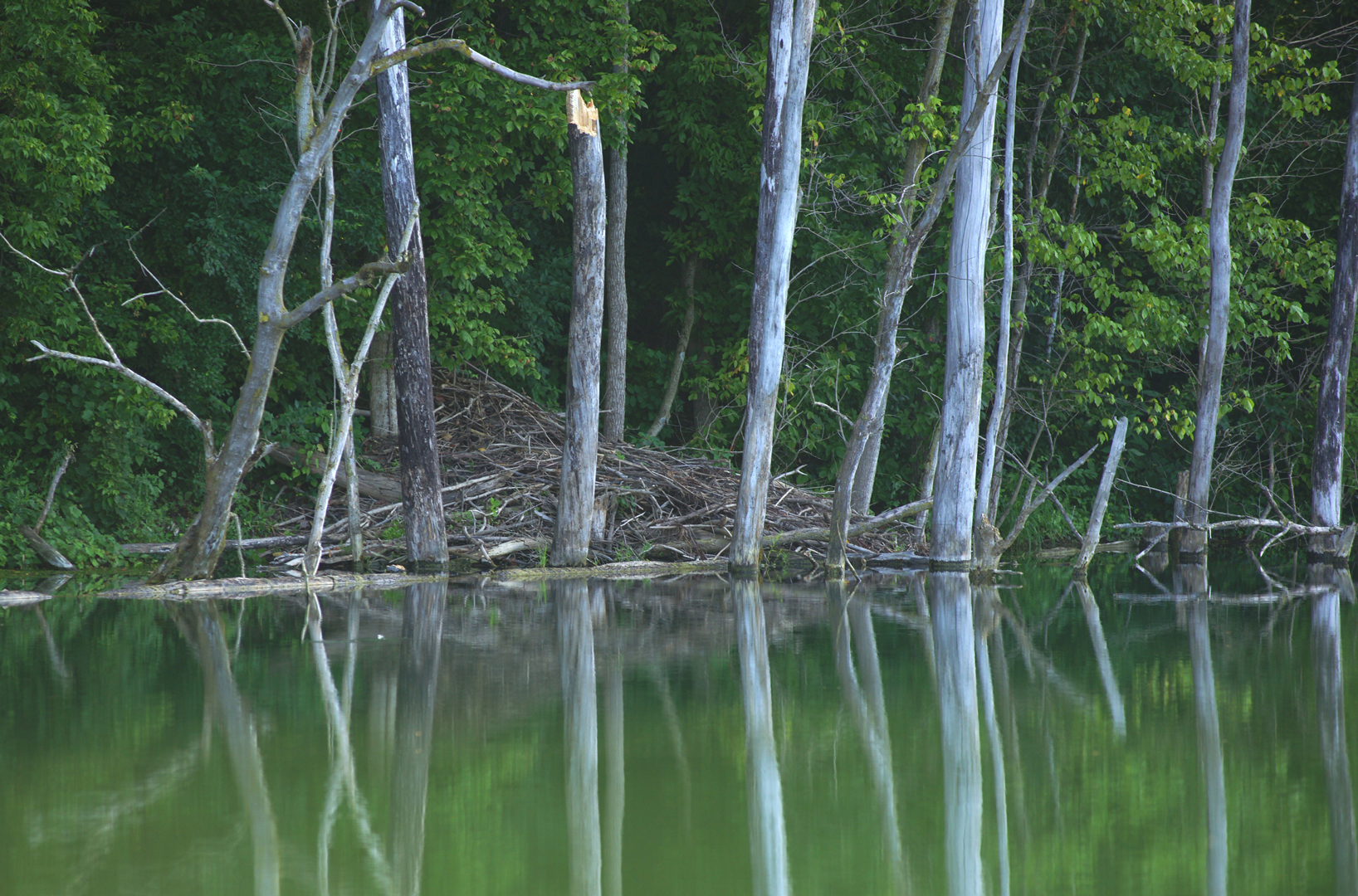JILL SNYDER, Highbanks Naturalist

Most of us are familiar with cartoon images of a beaver building a dam. Beavers are often portrayed with big buckteeth, cutting down trees, piling up wood and spreading mud on top with their broad tail. This image isn’t exactly an accurate depiction of a beaver’s life.
Beavers are more than just animals with flat tails that gnaw at trees. Their importance is nearly unequaled by any other animal in Ohio. They even helped settle the Ohio Valley as pioneers roamed through the uninhabited woodlands and floodplains. These mammals, with their specialized fur, teeth and tail are one of the more extraordinary creatures found in our Metro Parks.

As leaves fall from the trees and winter arrives, the presence of North America’s largest rodents becomes very noticeable. You can search along creeks in several Metro Parks and find signs of the beaver’s handiwork. Look for trees with the bark chewed off near their base or angular tree stumps they have left behind. Beaver use these trees and waterways as food sources and homes.
Being a herbivore, they eat the growth layer of the trees, so they will often strip bark and branches from fallen trees as food. In the winter, the surface of the water may freeze solid, making it difficult to reach trees, so beavers chew down extra branches for an underwater food cache located near the den or lodge. All this furry forestry makes beavers in the area obvious.
Gnawing wood takes special teeth. The front teeth of a beaver, or any other rodent, grow throughout the life of the animal. The front surface of the incisors is made of hard enamel that is a dull orange color. This makes their teeth strong enough to actually chew down trees. Since the back part of the tooth is not as hard, it wears off first, resulting in a chisel-like shape, which, for a beaver, is perfect for the tasks of felling trees and stripping their bark. A beaver can drop a 2-inch tree in just a few minutes. They can even chew roots and felled branches underwater due to a portion of their cheeks that closes behind their teeth, leaving them exposed and ready to work.
Along with their thick fur and evergrowing teeth, beavers have a distinctive flat, hairless tail. Their tail has multiple purposes that help them underwater as well as warn them against danger in the area. In winter, their tail acts as a fat storage device keeping their body well fed and able to weather the cold. It also works as a rudder. Used in combination with their powerful webbed hind feet, beavers can swim up to five miles an hour.
A beaver’s tail also acts as a portable chair. The extra cushion provides comfort as well as balance as they lean against it while standing or sit on top of it while grooming themselves. When a beaver senses danger, they will slap the surface of the water with their flattened tail to create a loud “Smack!” This sound helps to warn the rest of the colony nearby that they need to be alert for predators. They don’t use their tail to spread mud on their homes as we see in cartoons. The tails drag along behind them as they pile the sticks, sometimes helping to flatten any mud on top.

Beavers take large cut trees and pile them along a waterway creating a dam or lodge. Since beavers prefer to dam streams in shallow valleys, much of the flooded areas become wetlands. These wetlands support life with an unrivaled biodiversity. Beavers are natural engineers who reliably maintain wetlands that can sponge up floodwater, prevent erosion, raise the water table and act as “Earth’s kidneys” to purify water. The latter occurs because several feet of silt collects upstream of older beaver dams, and toxins, such as pesticides, are broken down in the wetlands that beavers create. Thus, water downstream of dams is cleaner and requires less treatment.
Here in the Metro Parks we have several places you can watch for beavers in their natural habitat, or at the very least look for signs of their presence. Try the appropriately named Beaver Lake at Prairie Oaks, or the park’s Darby Bend Lakes. Three Creeks and Blacklick Woods have active colonies along the Blacklick Creek Greenway Trail corridor.
Other places you can look for beaver activity include the confluence of Big and Little Darby creeks at Battelle Darby Creek, along any of our Greenway Trails, near the Olentangy River at Highbanks and in Blendon Woods. Since these animals are nocturnal, take an evening walk near the creek and watch for them or look for their signs during the day. Without the leaves and shrub layer of the forest, the winter makes a great time to look for these amazing animals braving the cold icy waters of Central Ohio.
